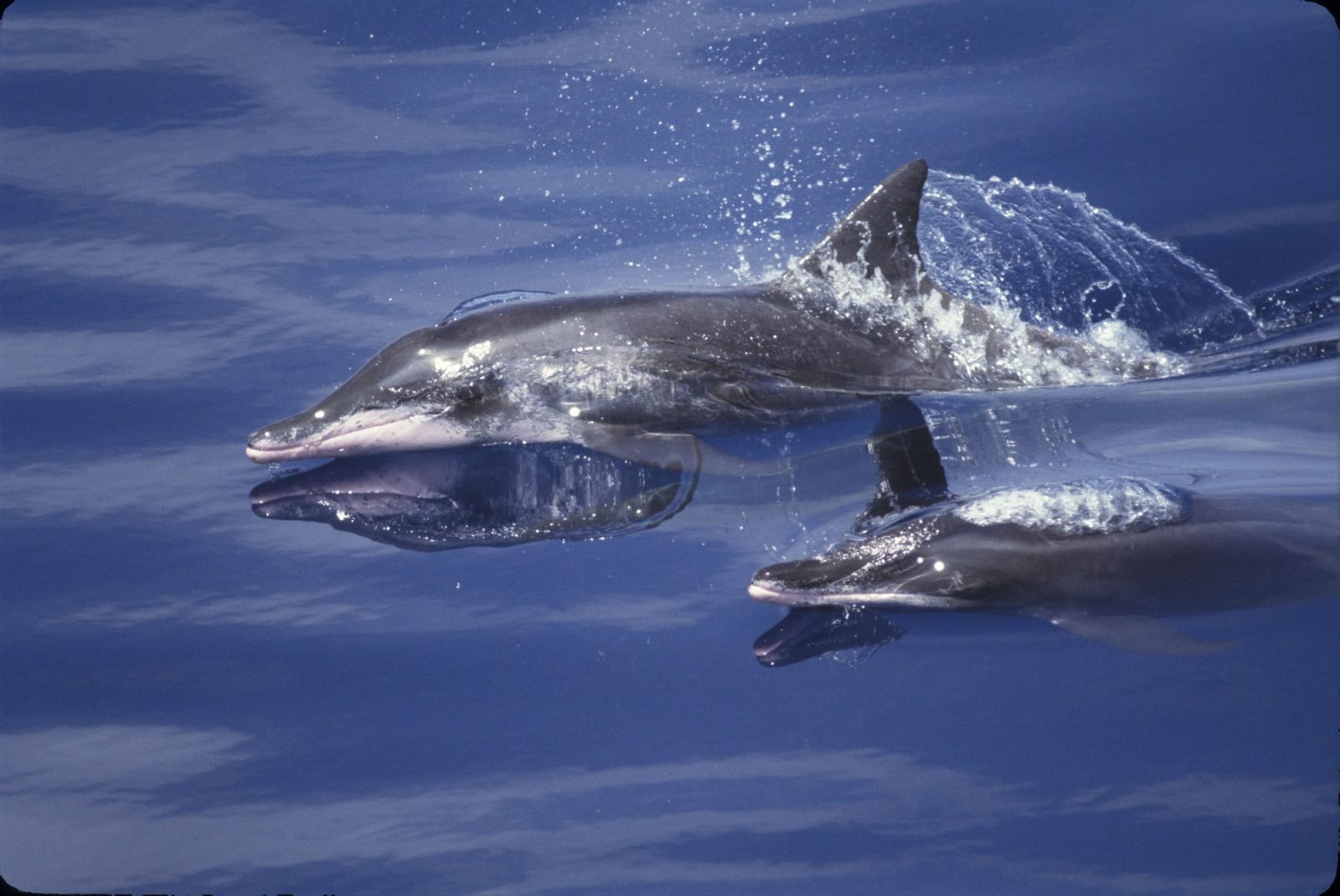
Rough toothed dolphin
The rough-toothed dolphin is a species of dolphin that can be found in deep warm and tropical waters around the world. The only member of the genus Steno, but more recent evidence has found that, despite its prominent bill, it in fact belongs with the blunt-nosed dolphins in the subfamily Globicephalinae.
The are found in the Pacific, Atlantic, and Indian Oceans, and in the Mediterranean Sea, in warm temperate to tropical waters, with occasional reports from cooler environments. Rough-toothed dolphins can also bee seen regularly in locations stretching from the Windward Islands to Cape Verde, but only a small handful have been seen in Azores and Madeira. Live sightings are almost universally made far off-shore, beyond the continental shelf, in water at least 1 kilometre deep.
Most of the research activity concerning the dolphin has been directed in the eastern Pacific, where a population estimate of 150,000 was obtained by researchers in the 1980s.
In the Mediterranean Sea, the species was once considered to be visiting from North Atlantic, however, recently a small resident population was found in the eastern section of this ocean.
Rough-toothed dolphins are typically social animals, although solitary individuals are also sighted. An average group has between ten and twenty members, but they can vary from as few as two to as many as ninety. Such groups are thought to be temporary assemblages, composed of smaller, more permanent groups of two to eight closely related individuals that occasionally join with others. They have also been reported to join groups with other species of dolphin, and with pilot whales, false killer whales and humpback whales.
Conservation status
The population is not believed to be threatened by human activities. A small number of individuals have been harpooned by Japanese whalers and pods are also slaughtered in the Taiji drive hunts. Others have been caught in seine nets by trawlers fishing for tuna. Less than a dozen rough-toothed dolphins live in dolphinarium around the world.
Below this, you will find a short video of these dolphins at sea. Below this, will be a list of any times it has been mentioned (being a specific type of dolphin it is not likely to be mentioned a great deal). Below this, we will add any links which will help you view it in the wild (do get in touch if you work in tourism around this species, we are keen to list your services, fill in the form at the top of the front page – list your wild place).










